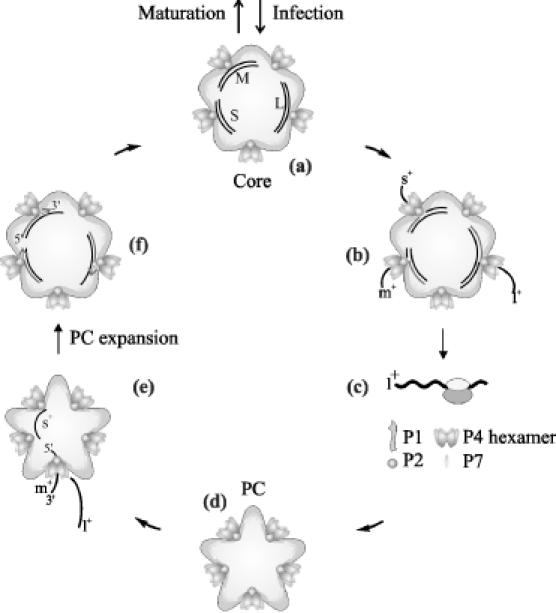Figure 1.

Simplified scheme of the cystoviral life cycle. The three dsRNA genomic segments of a cystovirus are brought into the host cell inside the viral core (a). Upon cell entry, the core catalyzes semi-conservative dsRNA transcription and (+) sense ssRNA transcripts (l+, m+ and s+) are extruded into the cytoplasm (b). The cellular protein synthesis machinery translates l+ RNA (c) giving rise to proteins P1, P2, P4 and P7. The newly produced proteins assemble into empty polymerase complexes (PC) (d), which are capable of packaging specifically one copy of each l+, m+ and s+ segments (e). Upon packaging PC expands and replication is initiated (f). The dsRNA-filled PC (core) can enter additional rounds of transcription or mature into infectious virions. The latter pathway uses proteins produced by the translation of m+ and s+ ssRNA segments, which is followed by the acquisition of the rest of the viral structural proteins together with the lipid membrane (not shown). The mature virus particles are released by lysis of the host cell (32).
